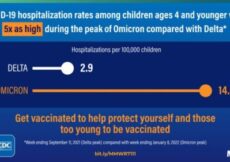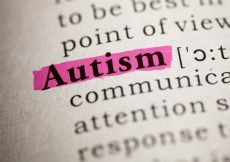The coronavirus disease 2019 (COVID-19) pandemic has led to a significant decline in mental health worldwide, marked by increasing anxiety, depression, and psychological distress. These adverse outcomes on mental health are driven by social isolation, lack of opportunities for ordinary leisure time activities, educational disruption, pandemic-linked job losses, and financial stress, as well as illness caused by infection with severe acute respiratory syndrome coronavirus 2 (SARS-CoV-2).
Adolescent mental health is particularly at risk, both because of the increased vulnerability during this time and because impaired mental health can have long-term sequelae, thus affecting adult life in these individuals. A new study published on the preprint server medRxiv* discusses adolescent mental health during the pandemic in association with a single set of parameters including the availability of digital access through computers to do schoolwork.

Background
Mental health in children was already showing a downward trend in the United Kingdom before the pandemic hit, with over a tenth of adolescents being diagnosed in 2017 with anxiety, depression, and the tendency to harm themselves. This has further worsened to 16% over the four years since then and reflects a more global trend.
Among the most obvious reasons for adolescent stress during the pandemic has been the closure of educational institutions. With the shift to online schooling, in many cases, the burden of this disruption fell largely on those without digital access because of a lack of access either to a computer or the internet.
This has been reflected in one U.K. study where almost a third of students from middle-class homes had live or recorded school lessons every day, with only half of this number of students from working-class homes able to participate in this platform of schooling. Disruption of education is a factor in impaired adolescent mental health, which could have partly accounted for the decline in the latter during the pandemic.
Secondly, with more or less severe restrictions on social contacts, adolescents suddenly found themselves having to adjust to their new normal of online or digital interactions with their friends. Thus, when these technologies were not available, the affected children felt even more stressed. The age group here is one that is readily affected by a lack of social contact opportunities, especially with peers.
About the study
The current study is based on data from Understanding Society, which is a longitudinal panel survey across the U.K. that tests the difference in mental health in adolescents who lacked digital access as compared to those who did not. This survey is a response to the lack of systematic research into the effect of socioeconomic disparity reflecting in less digital access for adolescents and the resulting impairment in adolescent mental health.
The researchers used latent growth curve modeling to understand mental health trajectories in this age group, with a comparison between groups with different rates of digital access.
The scientists used a question, inserted into the COVID-19 wave six questionnaires for youth distributed in November 2020. This question was, “Which of these things do you have at home to help you do your schoolwork?” The response options were “Access to a… computer” and “…good internet connection.”
Study findings
The latent growth curve modeling showed a quadratic trajectory for mental health in adolescents. They found that the group without computer access had a spike in mental health symptoms during the early days of the pandemic, with almost complete restoration in the group with good computer access by November 2020.
Conversely, there was no obvious link between access to a good internet connection and the mental health trajectory across the course of the COVID-19 pandemic. That is, there was an observable difference in the mental health trajectory during the pandemic, depending on whether the adolescents were deprived of digital access or not.
The trend began with a small increase in mental health symptoms from the pre-pandemic baseline in 2020, decreasing in the first part of 2021. These symptoms were more pronounced, however, in those who could not get access to a computer for online schoolwork, with the largest spike during 2020 and a sharper decline in early 2021.

Implications
The COVID-19 pandemic led to widespread school closures in March 2020, excluding those that served children of key workers or those children for whom school support was essential. Even with these exceptions, fewer children attended school than expected during the early part of the pandemic. A full reopening was delayed until September 2020, with local restrictions being enforced again in November 2020.
A fresh closure occurred in December 2020 until March 2021. The findings that mental health symptoms among adolescents worsened during the most stringent restrictions echo those of the Co-Space study and are associated with a lack of educational and social opportunities in this age group. With the March 2021 reopening of schools, some recovery was obvious.
The correlation between poorer mental health during periods of social/school restrictions with limited access to a computer is independent of other demographic indicators including sex, ethnicity, and household income. This shows that digital exclusion may exacerbate other deprivations.
Follow-up studies confirmed this, showing that students with limited access to a computer were less likely to have a suitable place to study, support from caregivers, or access to other learning tools. Thus, the children who were cut off from the digital world experienced isolation from their school learning process, as well as from their friends.
Without a computer, there was no protection against the loss of educational opportunities or social contacts during lockdowns. These mechanisms mediate the relationship between having a device and good mental health.
Conversely, having access to a “good internet connection” did not change mental health for the better, perhaps because this is less severe of a problem than not having access to digital media at all and may not have influenced their online school or friendship experiences. Secondly, it could be that different adolescents have different ideas about what adequate internet connectivity means.
This indicates the need to consider what digital exclusion means as policies are framed during the current pandemic. Better mixed-methods research could help understand precisely what aspects of school closures and social disruption are the most difficult to face for adolescents. If this strong relationship between poor mental health and digital access aligns with other life events as well, a broader frame of reference is indicated.
“Our findings combined with those of others, suggest that ensuring access to a computer or tablet may be a simple but important intervention should further school closures become necessary.”
Given the small number of adolescents who fall into this category in the U.K. and the use of a narrow definition for digital exclusion, many adolescents with mental health issues due to social and educational isolation as a result of not having access to the digital world may not have been included in this study.
However, this is the first longitudinal tracing of how digital disparities affect adolescent mental health and corroborates earlier hypotheses about such a relationship. The ongoing growth in digitalization means that it has become essential for most young people, both to continue learning and to foster social contacts if they are not to face being excluded from a majority of educational, social, and healthcare-related activities.
“We suggest that public health officials and policymakers prioritise digital inclusion as part of their pandemic response and recovery plans.”
*Important notice
medRxiv publishes preliminary scientific reports that are not peer-reviewed and, therefore, should not be regarded as conclusive, guide clinical practice/health-related behavior, or treated as established information.


































